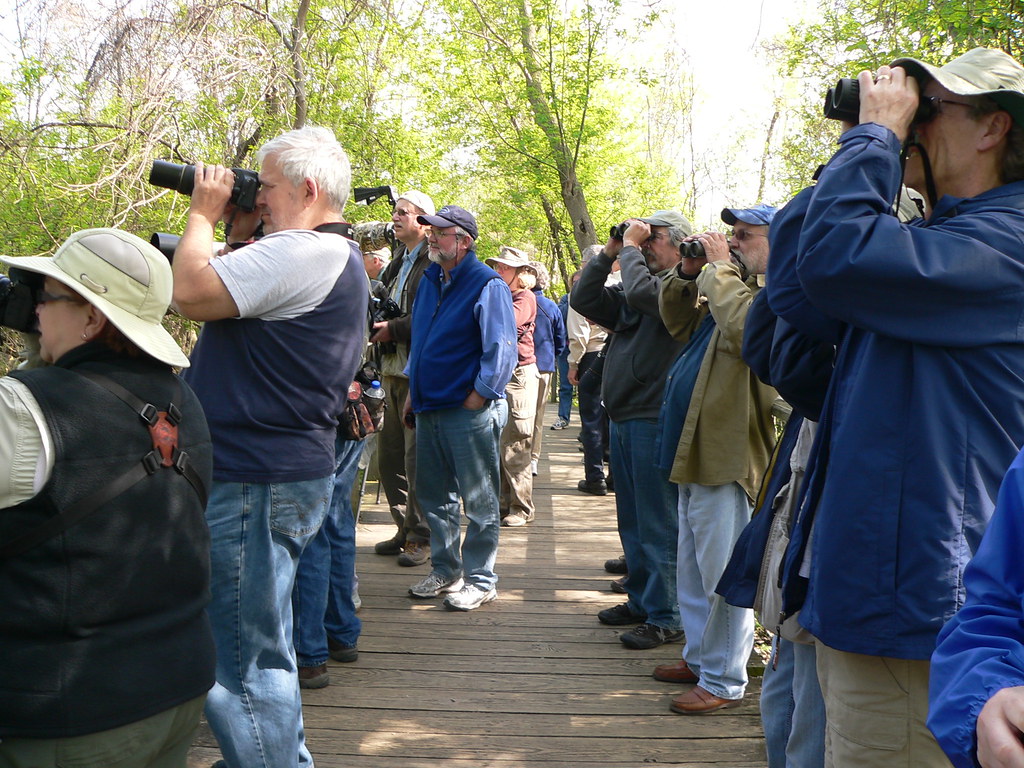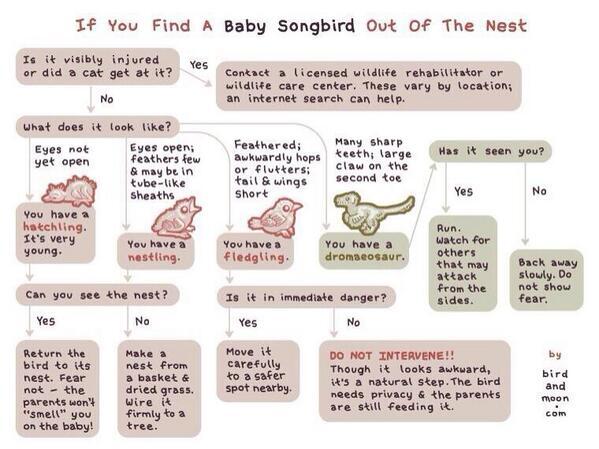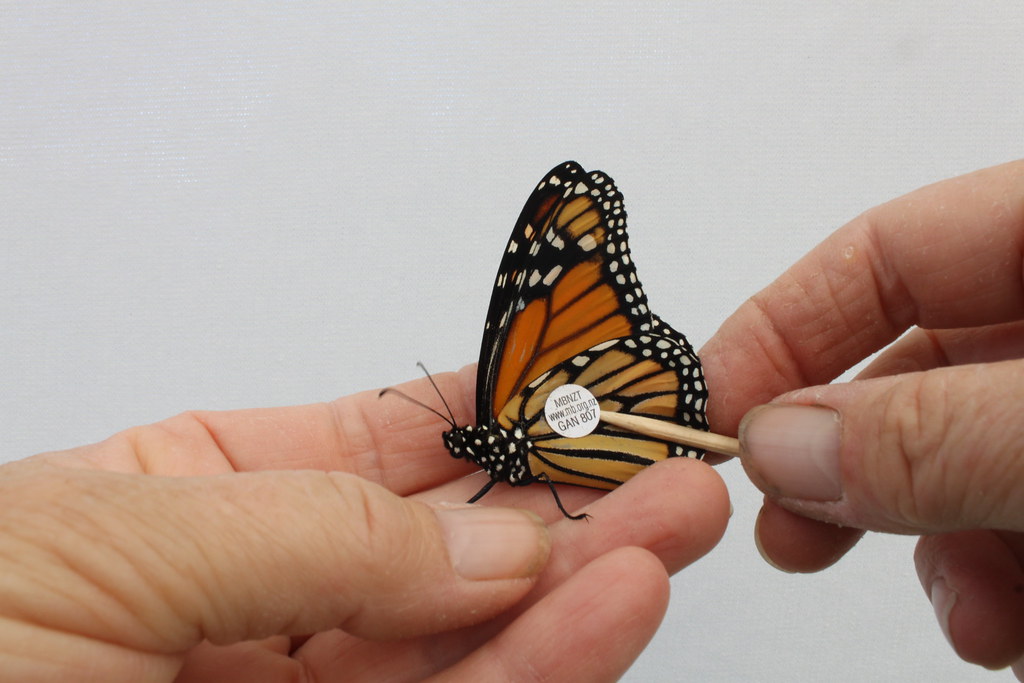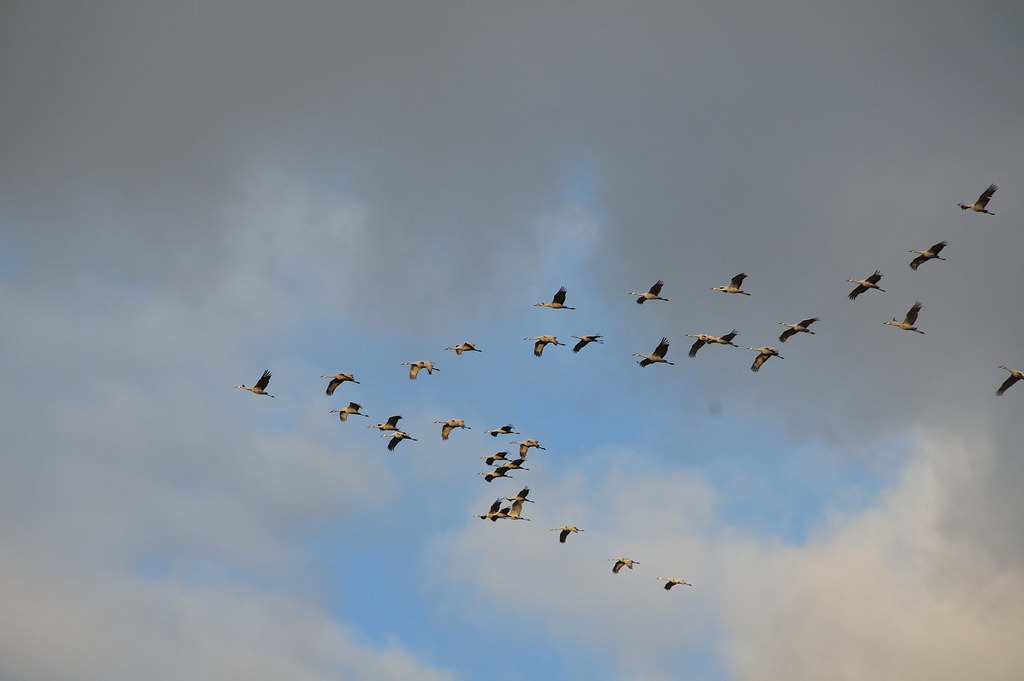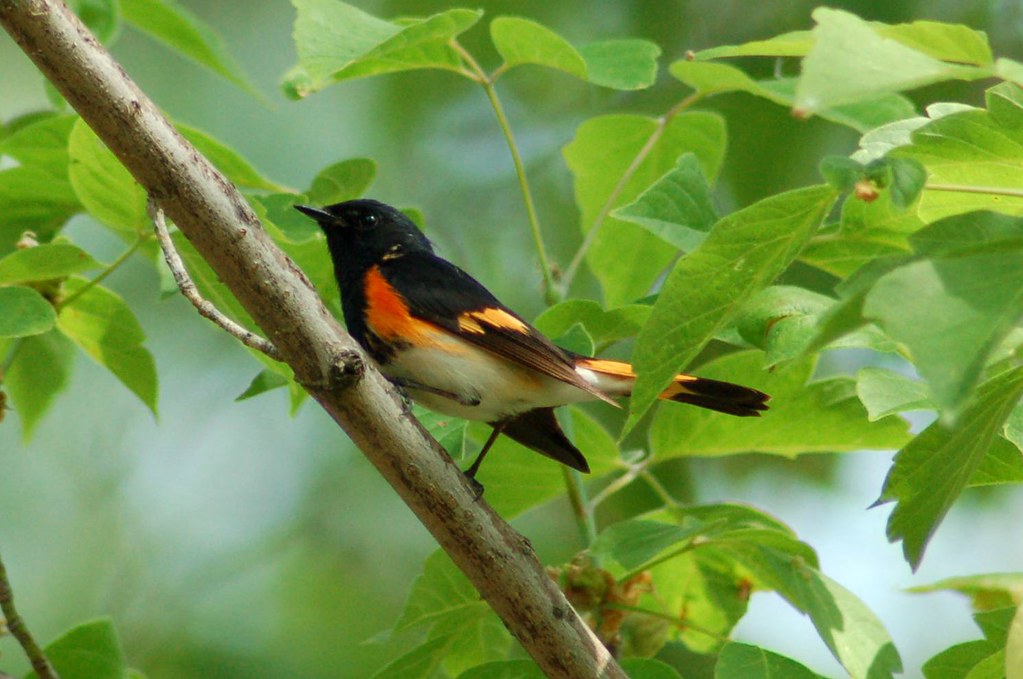So what exactly do I do with my little free time in graduate school? Recently it's been playing with Ebird data to do more research. To test the effectiveness of using Ebird data to answer scientific questions, I decided to answer one problem I've always wanted to know.
When do birds really migrate?
This large scale question seems appropriate for one of the largest bird sightings databases on the planet. The
eBird database gains more sightings every year. You can see this rising submission trend in the yearly Top 100 lists. Every year the top 100 becomes harder and harder to break into as more people post their data on Ebird.
This experiment actually turned out quite well and was a great learning experience. The resulting graph above is quite busy but we'll slowly go through it and interpret it for you.
From here you can either read the methods section following, or skip straight to the results.
---------------------------
Methods
---------------------------
So how do you get this data and how can you use it? eBirds philosophy is open data access for everyone. You can either ask for ALL the data ever in a raw format, or let eBird do the hard work. I decided the later and downloaded histogram data. This gave me the percentage of lists in my chosen area that saw the specific bird. It's essentially presence data. I downloaded data for all the birding sites in my areas of choice for the last 10 years. Most of these sites were based on migrant birding spots I already knew about. They are as follows:
-South Texas included South Padre Island(including the nature center), Laguna Atascosa NWR, Santa Ana NWR, Boca Chica, Sabal Palms, and some other migrant hot spots
-Upper Texas included all the famous High Island Spots including Smith Oaks, Boy Scout Woods, Bolivar Flats, Sabine Wood, Anahuac, Mcfaddin, and Lafitte.
-Alabama included every site on Dauphin Island and Fort Morgan/Bon Secour
-South Florida included any hotspot that had more than 150 birds seen in it. This was because I've never birded South Florida in spring, and I incorporated a larger area to make up for my lack of knowledge. These included all sites in Everglades NP, Key Largo, and hot spots around and along the coast in Miami including Bill Baggs Cape State Park and Matheson hammock.
These choices resulted in a large mix of wooded, grass lands, and large wetlands across the gulf. They resulted in a large difference in sample size between Alabama and the Upper Texas Coast. With Texas having the highest checklists and amounts of birds seen (400+) over the 5 month time period.
Once I had the data, I manually grouped all the birds into broad categories that vaguely represent Families. While most of these are obvious some should be explained.
- Waterfowl did not include sea ducks as I thought this muddied my interpretation.
- Hawks included Eagles and Kites (It really should be labeled raptors)
- Nightjars are both nighthawks and nightjars
- Cuckoos-the smallest grouping only included 2 species (Black-billed and Yellow-billed Cuckoo), but I felt it needed to be separated because their famous late timings.
- Tyrants-include all flycatchers and kingbirds
- Swallows-also include swifts
- Small Migrants-This category had to be made to keep my categories to a manageable extent. It includes Warblers, Thrushes, Waterthrushes (In later iterations I will separate these more appropriately)
- Tan/Gros/Bunt-Just incase no one understands, thats Tanagers/Grosbeaks/Buntings
I then made the tough decision of deciding what was a migrant, and what wasn't. The problem is some species (especially in southern latitudes) are year round residents and so just splitting my categories wasn't enough. South Texas Orioles are a particular good example; there are 2 resident Orioles (Altamire and Audubons), but during spring 7 species of Orioles are seen in the area.
I decided to subset the data based on if a species was sighted during less than 60% of the time period. As I started in February, I thought this would represent only birds who spent a portion of their life in the area. This filtered out effectively all but the rarest of species, most of which I either manually took out.
Now with my base data set, I summed up all presence percentages in a 1 week window and divided by the total percentage through all weeks in Migration (Feb-June). This created a standardized metric that basically shows at what window the group is most likely to be seen between. If a group is only seen during a two week period, it would have a huge spike during those weeks and then no data otherwise. If it's seen consistently through all weeks, the values would be even with no spikes.
I ran all of this in the stats
program R (praise be to him).
-----------------------------
Results
-----------------------------
So what the hell is going on here?
A whole hell of a lot. But before we start interpreting let me remind you the variability inherent in data of this kind. This is a conglomeration of thousands of peoples bird lists. They span a vast amount of birding skills, truthfulness, and exactness. Species may be incorrectly identified, effort hours may be off, and birding may not even be reported sometimes. It also has a high degree of variability with birds that are not easy to spot, like rails. If someone is on High Island for migrants, they may not even go looking for the rails, and thats not taking into the fact the incredibly secretive nature of rails. (except on the South Padre Island Nature Center boardwalk)
So with that, we'll move forward and interpret group by group.
Waterfowl (red)
The waterfowl are the easiest pattern to discern. In February they're very common, peaking right at the beginning of our study period. What surprised me was how late waterfowl stayed. I inherently knew this, but it takes until April Week 4 for waterfowl to really be off the radar.
Hawks (orange)
The Hawks followed almost the identical trend of waterfowl, except in South Texas. A famous spot for hawk migration, South Texas hosted more hawks farther into the season. These peaks aren't evident even in the Upper Texas coast, possibly due to the spreading out of these hawk populations after reaching South Texas. It's also interesting to note the presence of so many hawks in winter is due to species like Harriers, Ferruginous Hawks, Osprey, and Sharp-shined Hawks that move their distributions south in Winter.
Rails (yellow)
Auriel and I's favorite group had the craziest of graphs. The interpretation is muddied by a lot of different factors. For one, Rails are difficult to detect, especially in winter, and two not many people look for rails if they're not calling. This means rail detection is a function of calling and to a lesser extent the threshold amount of rails it takes to start seeing them run out in the open. Rail's also winter on the gulf coast and species like Gallinules migrate across the Gulf of Mexico. The graphs seem to show an increase in detections starting April 1st, but then peaks in May. I personally think this is because Rails are infinitely easier to detect when they're calling during breeding season, not because they're migrating late. Clearly better data is needed
Shorebirds (greenish yellow)
Shorebirds show a constant migratory presences starting in mid march, and continue at a steady rate, till they peak again in late May before quickly disappearing. In many cases this could be due to a subset of late migrants. My opinion is this is a subset of arctic breeding migrants that show up much later while they wait for the arctic to warm up.
Gulls/Terns(actual green)
Gulls and terns are constantly present on the southern latitudes. Most terns can be seen in South Texas and South Florida at all times of the year, and all of the coasts get a switching out of various gull species. In the northern sites, we see a sudden spike in presences of gulls starting in the last weeks of May. Whats going on here? Diving into the data a bit more, it seems many tern and gulls were filtered out from screening, leaving only a few species to drive this whole graph. The May spike is driven by the late migrating Franklin Gulls. And then as they move through, the left over breeding terns like Least Terns increase in either abundance or detectability in the upper gulf coast. This is particulary evident comparing Alabama and Florida. In April gulls/terns are common along the coast, but by June they've left the southern latitudes to breed.
Nightjars(some other shade of green)
Nightjars/Nighthawks are breeders in the south and show up much later than many of the migrants. We see the first presences of them around April Week 2, and then they steadily ramp up till they're at their peak in June. This is a function of the fact a lot of these nightjars will breed in the south and are really conspicuous due to their breeding calls and evening flights.
Cuckoos (bluish green)
Like expected, Cuckoo abundance spikes much later than the passerine migrants. The peak seems to be between the 1st week in May. Once cuckoos arrive they are commonly found. This is most likely due to their obvious call that can be heard from far away in riparian corridors. While this group only contains 2 species, I was surprised it created such a nice clean graph.
Hummingbirds (teal)
Hummingbirds winter in the southern latitudes, especially in South Texas and Florida. This creates a great dichotomy of hummingbird abundance starting in the beginning of April. At that point all the hummingbirds in southern latitudes disappear and abruptly appear on the northern Gulf Coastl. Then ny June all of the hummingbirds have migrated out of the area, and few migratory hummingbirds remain in the area.
Aside from Sparrows the remaining groups are common passerine migrants that show similar timings.
Tyrants (white)
Tyrants start moving through a little earlier than the small migrants and then stay at a higher proportion than the smaller migrants. I expected this from the high amount of tyrants that breed in the south especially Texas (Scissortailed Flycatcher, Eastern/Western Kingbirds, Acadian Flycatchers, Vermillion Flycathcers, Great Crested, Brown, and Ash-throated Flycatcher). Though in general, the tyrants maintain a presence at all southern latitudes throughout the year.
Vireos (light blue)
Vireos moved in a very sterotypical pattern, they ramped up migration starting in Week 3 in March, they peak Week 2-3 in April, and leave by June 1st.
Swallows (Blue)
The swallows appear to already be on the move once February hits, but they really start migration mid March. Once May hits, swallow numbers dive quickly and are gone by mid May.
Small Migrants (Blueish Purple)
The small migrants represent the largest group by numbers of migrants. They category in itself is a bit disingenuous because many of these small migrants winter on the gulf coast. Certain warblers like Parulas and Yellow-throated Warblers winter in South Texas and Florida, and Hermit Thrushes are uncommonly seen at all our sites in the winter. The popularity of warblers, plus their mass numbers helped give this category the smoothest graph. In general, small migrants began migrating late march, peaked Week 3 in April and tapered off by June.
Sparrows (purple)
The sparrow are a common winter resident all around the country. They stick around till the 1st week in April, and as the gulf migrants start to peak, the sparrows decline and are gone by May 1st.
Tanagers/Grosbeaks/Buntings (pink)
This was another small group that showed up well in the graph. This group had a large spike starting the first week in April and then gently tapered off till the last week in May. We can really see how concentrated some of these movements are within Passerines. Neither Tanagers, grosbeaks, or buntings are particularly related to each other. Grosbeaks are a mixture of multiple families and buntings are in the family with sparrows. Regardless of their real lineage most Passerines are migrating in this small 6 week window
Orioles (fuschia)
This was the second smallest group, and contained the largest spike in presence. All the Orioles migrate during a concentrated 5 week window between Week 1 in April and Week 1 in May. The interesting thing is the continuing presence of Orioles in the High Island area in June. This is due solely to the amount of Orchard Orioles that nest in the area.
---------------------------
Overall Timings
---------------------------
So we've successfully mapped all the migrants, and I've got you all excited for migration. You may even be thinking of planning a trip down to these spots. But when should you go???
Well I've got you covered again.
I took all the presence data across each one week window and summed them to quantify the general diversity at each time frame. I then took the weighted average across weeks to find the center of the data where the highest diversity and numbers of birds could be seen. The weighted average is just the value seen multiplied by the probability, so in this case the proportion of sightings in that week compared to all 5 months. I then plotted each graph to visualize timings. The way the numbers work the Y axis is largely meaningless. Just focus on heights relative to each other.
----------------------------
South Texas
South Texas had a beautiful graph with highest diversity the last week of April. It sharply spikes in April and is most productive during Week 2 in April and Week 3 in May, making up a 6 week window of great birding. The weighted average landed on April 19th. This is only a couple days shy of Week 4 in April. The sharp spike in migrants is largely due to the fact that most birds are residents of South Texas, birding is always good from Winter to Summer, so what we're seeing in this graph is the filtering out of all these resident birds, and we're left with just migrants.
Upper Texas Coast
High Island approaches what we call a
normal distribution, with a positive bias due to the breeding migrants in the area. The largest spike occurs in Week 4 in April, and this shows in the weighted average falling on
April 24th. This is actually inline with a typical Big Day, and only 1 day off from Team Sapsuckers record breaking
big day last year on April 25th.
Alabama
The problem with Alabama's data is definitely a sample size problem. Without enough samples the graph bows out without centering on a specific point. This could be due to the fact Alabama actually receives some of the lowest number of migrants due to prevailing winds blowing north west in spring. The mean track of birds tends to funnel between between Louisiana and Texas. For major fallout events in Alabama to occur winds have to unpredictably shift east. This might lead to the spreading out of peak abundances across April. On the graph, the highest peak occurs Week 1 in May but the weighted Average actually sits at
April 19th.
South Florida
South Florida isn't necessarily known as a migrant hot spot in Spring. Many birds cross the gulf of Mexico instead of moving along the over land route in Florida. Radar studies show very little use in Florida, as many birds skip over southern Florida entirely, landing around Tallahassee instead. South Florida is also the first stop for migrants in the Caribbean, as opposed to birds traveling from Central America that land in South Texas after crossing the gulf. This means we'd expect to see an earlier peak of migrants. Finally, a lot of bird species winter in South Florida, but very few migrants end up breeding in South Florida, this skews the graph negatively towards the earlier weeks. All of this leads to the graph showing a peak in Week 3 of April but the weighted average being pulled all the way to the
April 8th due to the lack of migrants in May and June.
---------------------------
Many weeks and almost 3000 words later, I've still only touched half of what this data set tells us. I'll be using Ebird in part of my Masters Thesis now, so I plan on testing more methods on the blog as I can moving forward. Stay tuned! And get excited! Spring is here! ...sort of...
-Boone



